Robert Cummings Neville: Personal Autobiography: Yale
When I was thinking about college during senior year in high school, most of my friends applied only to local institutions; so I applied to Central Methodist College in Fayette, Mo. But I had also heard of Harvard and Yale, and so applied there, looking up their locations in the back of the dictionary. The Ivy League alumni groups in St. Louis arranged for the promising students to be interviewed and the interview report became part of the application. Harvard did not interview me. Yale did, however. I went to the Yale interviewer’s house late one evening and found him to be a seriously drunk old man; being a teetotaler at the time I was uncomfortable. But whereas Harvard later sent me a rejection letter expressing surprise that I thought myself a plausible candidate for admission, Yale accepted me with a full scholarship plus room and board if I held a college job, which I did. To this day I have a deep appreciation for elderly drunks. Yale changed my life.
My father drove me from St. Louis to New Haven in the fall of 1956 and helped carry my stuff to my fifth floor room in Bingham Hall. The next thing I had to do was stand in line at Connecticut Hall to get linens for my bed, so he shook my hand, turned, walked through Phelps Gateway, and drove back to St. Louis. Anxious as I was about getting along by myself at college, I was shocked at the abrupt end of childhood, which I knew at the time had just taken place. Dad had always said that his major criterion for my college was that it be a thousand miles from home. For him, college was about leaving home and finding a larger world. My parents sent me $15 a month spending money my freshman year and then $20 a month thereafter though college. But I was on my own. Figure 61 is my high school “portrait,” when I was 16; Figure 62 was taken at the same time as I tried to look “cool.” Figure 63 is my college senior portrait photo, taken when I was 20 and so very much more sophisticated. Compare figure 63 with my father’s college senior portrait, figure 17.
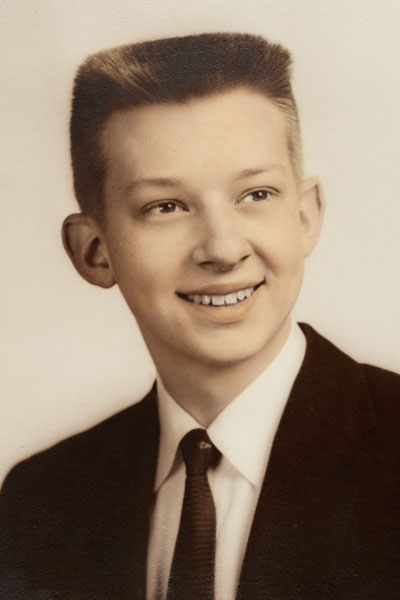
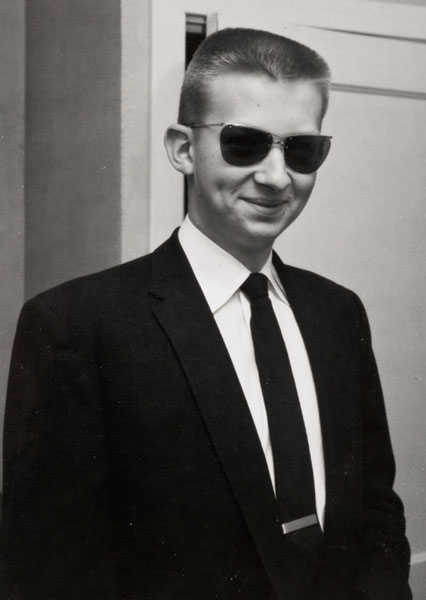
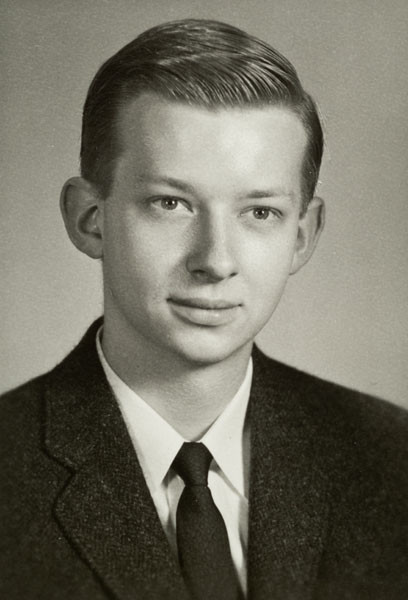
I arrived at Yale with a fundamentally religious orientation; I hung a print of Warner Sallman’s head of Jesus on my dormitory wall. My two roommates were Jewish and Greek Orthodox respectively and they tolerated my piety, although they believed it was “Midwestern.”
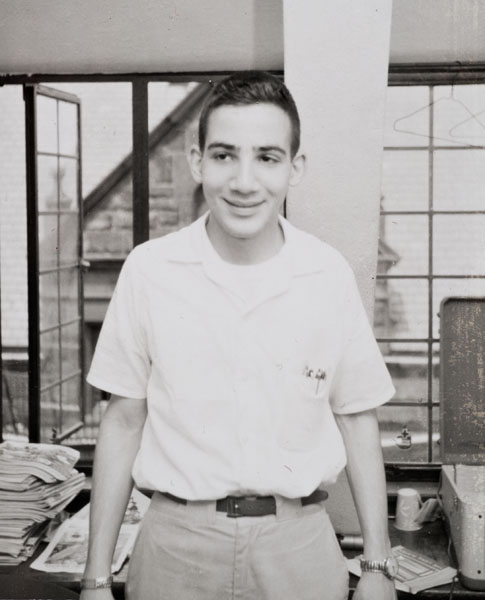
More important than these “ecclesiastical” transitions was the spiritual or emotional one concerning religion. Warner Sallman simply was not legitimate at Yale. Within two months I realized that my intended Protestant Methodist Christianity had to be far deeper and more critical than could be borne by my home and high school piety. I met people who had been to Europe! Most of my classmates used words I had never heard pronounced! The great spiritual question was whether exposure to the great cultures of the world and the modern ethos of science and critical philosophy could be compatible with a serious religious life. Toward the end of my freshman year I read Paul Tillich’s The Courage to Be and found the path on which I’ve been ever since. As narrated in my “Intellectual Autobiography” in this website, I was helped to find a religious identity sophisticated enough to allow vulnerability to criticism by many people, but especially by John E. Smith, my mentor. From Tillich I learned that the sophistication of higher learning is not incompatible with being religious but actually requires it. In later years I came to understand the difference between Christian theology focused on the identity of Christianity and Christian theology that says Christian identity ought to be conformed to whatever is true, and thus is dynamic and consequent to inquiry, feeding on challenges. That point came to me first from Tillich and is discussed in reference to him in the first chapter of my Realism in Religion.
Academically I started off at the bottom, getting C’s and D’s the first semester. This was quite a shock for someone who had been high school valedictorian. But then nearly all my classmates had been at the top in their prep school or high school class, and by definition half of us had to be below the median at Yale. Learning slowly to read well, to write, and even a bit to reckon, I finally graduated magna cum laude and in graduate school received only the highest grades. But I was always surrounded by people palpably smarter than I. In grade school and high school, my friend Ray Shepherd always beat me in the math tests. Senior year in college, walking home from taking the graduate record exams, two of my roommates, Dick Beals (figure 66) and David Krantz (figure 67) were arguing about which one of them had gotten one of the math questions wrong while I was suppressing tears about not finishing the last third of the exam.
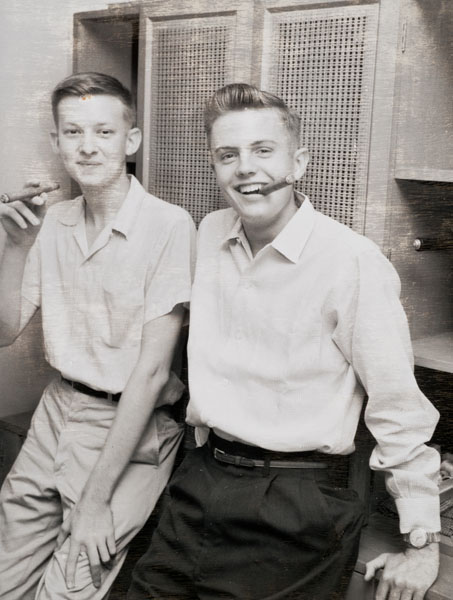
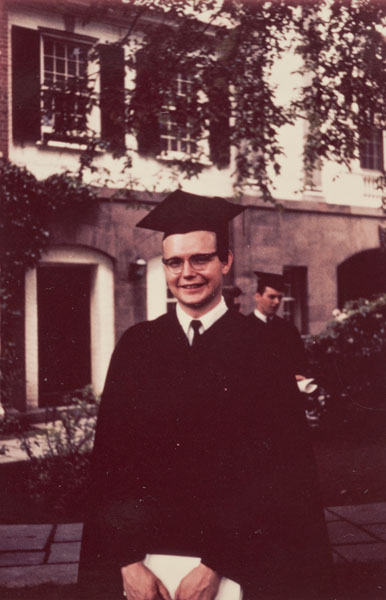
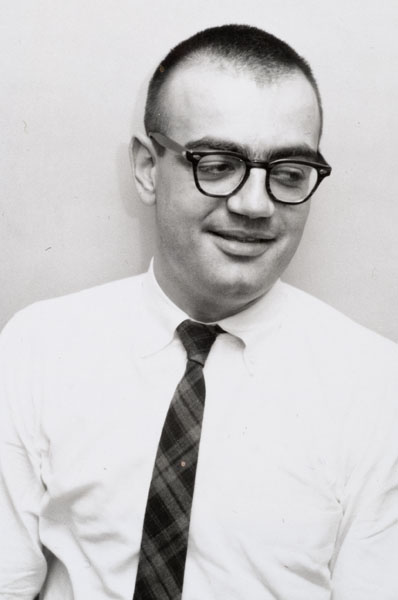
My college curriculum involved Directed Studies the first two years and a philosophy major the last two. The Directed Studies program had the conceit of compressing a four-year liberal arts education into two years, leaving time later for the major concentration. So I studied two years of philosophy, literature, and German, a year of art history, European history, calculus, biology, and a semester each of economics and sociology, all as part of Directed Studies. In junior and senior years I took two semesters of religion (both with Hans Frei), four semesters of Greek, and the rest philosophy. Junior year I began taking graduate courses with Paul Weiss, an amazing intellect and teacher; his son, Jonathan, was in my class and had been in Directed Studies. In graduate school I continued with only philosophy courses, though I mostly studied with professors who had not been my undergraduate teachers; John Smith was the main exception. All in all I had four courses on Kant’s first Critique, four on Hegel (one on the Phenomenology and three on the Lesser Logic), two on Plato, two on Aristotle, two on Leibniz, one on Spinoza, some wonderful surveys of epistemology, ethics, and metaphysics taught by Brand Blanshard, two courses on medieval philosophy taught by George Lindbeck, and several courses on pragmatism, Continental philosophy, and analytic philosophy.
Those were glory days for the Yale philosophy faculty. But I learned as much or more from fellow students, beginning freshman year and continuing through graduate school. Jonny Weiss, Eric Walther, and George Smith were the most fearsome of my undergraduate philosophical classmates. I came eventually to room with Dennis Longwell and Ned Carleton, both philosophy majors. In graduate school my first year I spent many hours with William Wiebenga and Robert Ehman, especially the former; the second year I met nearly every evening with Carl Vaught and often Stephen Erickson, and Gresham Riley. The standard graduate school load in philosophy was five courses a semester; but most of us sat in all the other courses that were offered so that the common experience in classes made a fine foundation for constant debate and inquiry. The ethos in those days was set by analytic philosophy, under the inspiration of Wilfrid Sellars. This meant that one’s first response to an idea was to refute it, a skill I developed with a sharp tongue. But behind the debating atmosphere was a genuine sense of friendship and support. The basic idea behind my dissertation was hammered out in many conversations with Carl Vaught and Steve Erickson, among others. My wife, Beth, whom I dated during the third year of graduate school, remembers tippling with my friends at the Old Heidelberg. She was astonished when Vaught shouted in a loud voice, “Neville, if you say that you’ll have to prove God!” Beth reports that I responded calmly, “Don’t worry, I’ve got that problem solved.” (Beer came by the pitcher.)
Not all my friends were philosophers. But the friendships were in many respects more important than the philosophy I learned. William Derveniotes (figure 68) was my roommate all four years of undergraduate school.
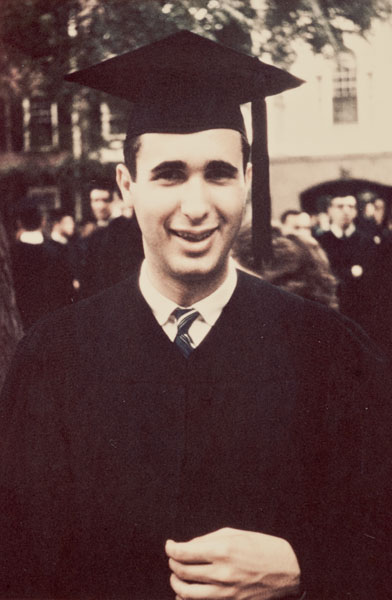
Intensity frequently characterizes college friendships, and that was the case with many of mine. Peter Kirschner was a powerful friend freshman year, a man enamored of Mozart’s Magic Flute who could sing Papageno’s arias. Gerald Busby was a student in the Music School freshman year but transferred to Yale College to major in philosophy. He became a professional musician, composing and performing at the keyboard. He set one of my sermons to music and had me preach it in the music at one of his recitals at Carnegie Hall—even without musical talent I’ve performed at Carnegie Hall! Gerry composed a special piece for our 50th Yale Reunion. Gary Knoble, whom I met my first day at Yale, came from Salt Lake City, even farther from Yale in miles and culture than St. Louis, and we clung together in shared fear and affection. [figures 69, 70] Roommates shifted with different living accommodations throughout college. Gordon Mork (figure 71) and Alexander Lukens (no photo) joined our group. Senior year we had an apartment for eight, seven of whom are depicted in figure 72, a graduation picture (Alex Lukens took the picture).
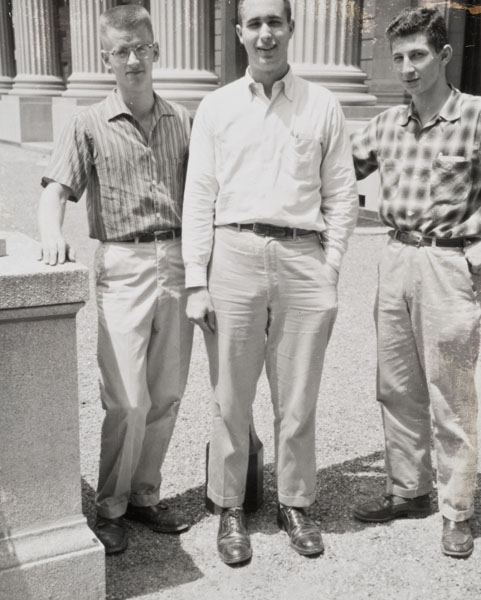
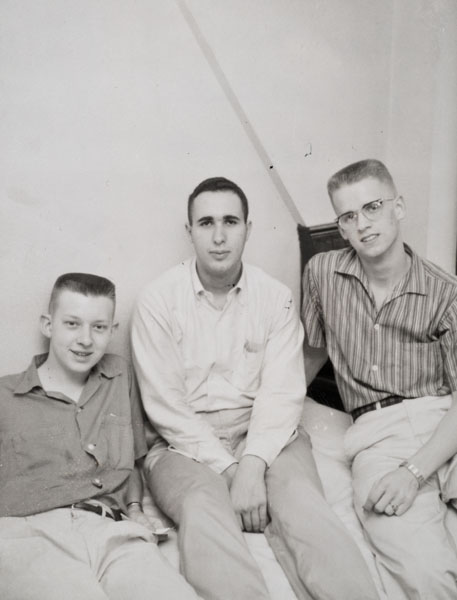
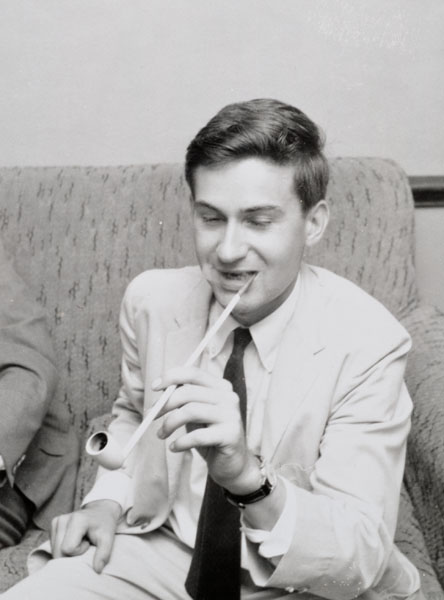
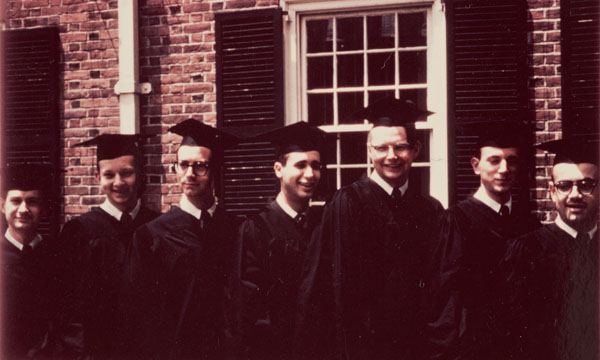
All in all, my time at Yale was a journey of increasing focus, of narrowing and sharpening of my philosophic skills and ideas. It was a period of compression.
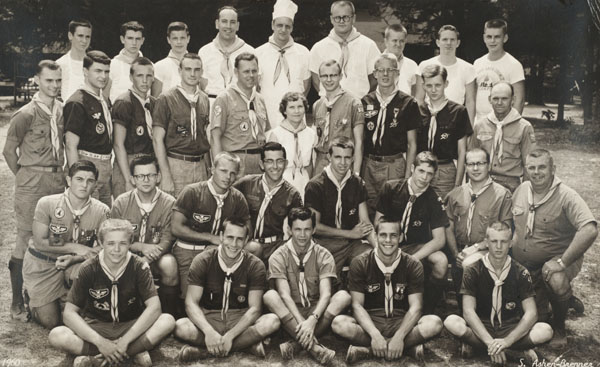
But a countermove was in the works. After we graduated from college in 1960, my roommate Dick Beals went to Harvard for graduate study in mathematical economics. There in the lunch line he met a woman named Beth Egan who was working on an MAT degree in the Harvard Graduate School of Education. She took a shine to Dick and his Harvard friends and thought that he would be a good match for her housemate, Nancy Farwell. She introduced them, they fell in love, and eventually married. Meanwhile, Dick could take only one year at Harvard and returned to Yale to study mathematics where he took a Ph.D. and spent the rest of his career as professor, and eventually chairman, with a brief time at the University of Chicago. Back at Yale in 1961-62 he noticed that my “focus” was rather lonely, so he and Nancy introduced me to Beth Egan. We double-dated, going to a hockey game at the new Eero Saarinen rink in New Haven and then returning to Dick’s room to read Ionesco plays together.
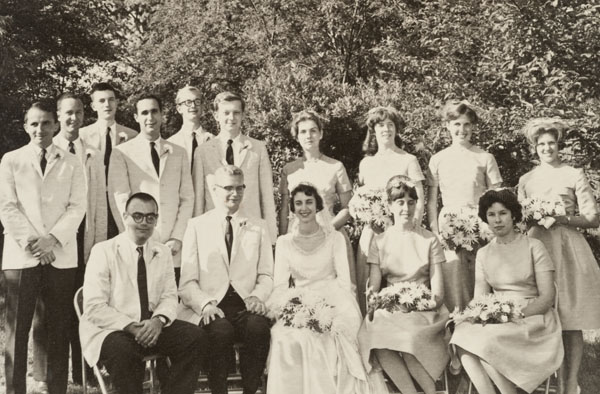
On May 29, 1963, I was ordained a deacon in the Methodist Church in Missouri. On June 8 Beth and I were married in her home church in Claverack, New York. On June 10 I received my Ph.D. from Yale. What a completion for a Yale education! From then on, my life expanded in every direction.
